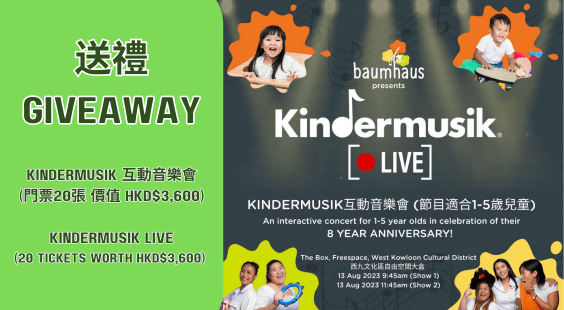
6 Tips to Choose Suitable STEAM Courses for Your Kids
STEAM courses are currently in high demand; it’s a hot topic for parents. The parents either want the schools to adopt the STEAM methodology or they are seen flocking at interest classes to look for the best STEAM courses available for their children.
But what exactly is STEAM? Is it a new course? And why all the craze?
Let’s try and understand it better. STEAM simply means a methodology that reflects real life. STEAM stands for Science, Technology, Engineering, Arts and Mathematics. The focus of such a methodology lies in inquiry, critical thinking, and process-based learning. The aim is to enhance the thinking skills of the students and ensure their natural curiosity is tapped and nurtured. The students should be able to find practical solutions to problems by asking the right questions.
If we look at a real-life problem, it does not necessarily exclude one subject from another. For instance, if an architect is tasked to build a house for a client, will definitely use Science, Technology, Engineering, Arts and Math (STEAM) in some form or another. If he/she has to ensure the client presentation is engaging, he/she has to present the house designs using strong visual communication techniques. Knowing how to design rooms so it gets maximum sunlight, requires knowledge of science. Leaving scope for plumbing or installation of electronics, requires knowledge of engineering and math. Making the sketches visually appealing, requires integration of Arts. Being able to communicate the idea effectively while presenting requires the ability to structure thoughts.
So, this is what STEAM education does. It integrates the various disciplines into one and ensures that teaching, both inside and outside the classroom, uses this integrated technique. STEAM allows students to take thoughtful risks, engage in experiential learning, persist in problem-solving, embrace collaboration and work through the creative, inquiry-based projects. Students who participate in STEAM learning are able to think creatively, find it easy to collaborate with others, feel comfortable with the process of learning, become curious about the world around them and feel empowered to put forth their ideas to improve the world.
If you are still not convinced about the value of the STEAM methodology, let’s look at what researchers have to say about it. As per a 2016 study, researchers investigated the impact of STEAM lessons on physical science learning in grades 3-5 in high poverty elementary schools in urban district. Findings indicate that students who received just nine hours of STEAM instruction made improvements in their science achievement. (Brouilette, L., & Graham, N.J.).
Having established the importance of STEAM education, let us now look at how to select a suitable course. If you are investing your time and money into a program, you want to ensure that it’s providing rich and meaningful experience to your child. Whizpa brings some tips (see below) to help you do just that:
1. Ask the Principal / Lead Instructor whether the Program is Inquiry-Based – Try to find out about the way the program is built. Check for the following indicators that help ascertain whether the course offers inquiry-based learning or not:
- Is there equal emphasis on process (communicating, reflecting, collaborating, analysing, etc) and content?
- Does the course focus on genuine curiosity, wonderment and questioning (by teachers AND students) ?
- Are the students’ questions are taken seriously and addressed?
- Are the students actively involved in constructing and understanding through hands-on experiences, research, processing and communicating their understandings in various ways?
- Is the learning restricted to classroom alone or are the students encouraged to learn outside the walls of the school as well?
- Are reflection and depth of thought valued by the teachers / faculty?
- Are the kids asked questions which cannot be simply Googled?
(Source: https://www.pexels.com/photo/a-child-holding-a-jet-made-from-colored-papers-8612984/)
2. Keep Your Eyes and Ears Open for Parental Reviews – A relatively trustworthy and easy way to find the best possible course for your children is via parents’ testimonials. When you are assessing whether some course is right for your child or not, look on the web for past reviews and feedbacks from other parents. If you want to be thorough in your research, you can even try connecting with the parents on a one-one basis to understand what worked / did not work for their kid at the time he/she got enrolled in that particular course.
3. Check How Students are Assessed in the Program – The assessment of students’ performance in STEAM courses is different from a regular assessment. Here, the focus is less on the final answer a child furnishes to a particular problem area and more on the level of understanding the student has mastered about the process. Learning involves intellectual, social and emotional engagement. Many times, STEAM projects also enable and encourage students to take risks. These risks should be viewed in a positive light, and instructors should be able to assess the performance basis these risks. Some instructors even encourage students to come up with a journal. They let the students detail our the actual process, their thinking and rationale, the results and what they learned. They then grade the students’ journals holistically and subjectively.
4. Review the Available Facilities and Technological Know-How -Check what kinds of facility/technological support does the school/course centre offer – do they have various hands-on activities or do they help explore digital technologies and tools to promote creativity, invention, and collaboration? If the course intends to teach students about usage of water and hydropower, for instance, then does it focus on simply classroom learning about the topic or do they have the capability to actually build a model of a hydroelectric dam with the help of students and provide a real-life, hands-on learning.
5. Understand if the Teachers Qualify for STEAM Teaching – It is imperative to ensure that the instructors/teachers who are imparting STEAM lessons are well qualified to perform the role. Ask for their credentials and experience in this modality. Equally important is to take a look at what does the classroom resource, activities and lesson plans look like. Check if there are regular teacher training programs happening at the course centre too or not.
6. Know Your Budget – Like every other developmental activity we place our kids into, we need to be cognizant of the level of investment we want to undertake. Whizpa can help you find the best suitable STEAM course within your budget.
STEAM learning offers to not only produce tomorrow's journalists, technicians, lawyers and engineers; it holds promise to develop innovative mindsets and the ability to problem-solve, ensuring that our children become creators of services, not just passive consumers.
To be able to find the right resource, Whizpa welcomes you to register yourself for the SCMP Learning Festival 2021, scheduled for 11th September 2021 at Kowloon, Tsim Sha Tsui. The festival provides a platform for parents to research and learn about the skill-enhancement options such as STEAM workshops to help kids grow and develop into responsible citizens as well as informed and creative professionals.








